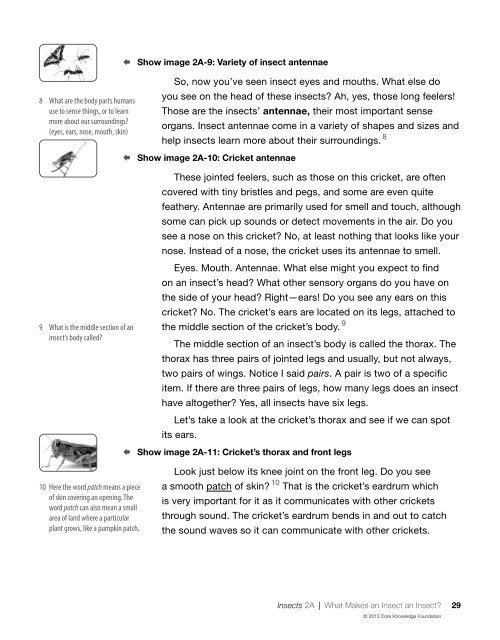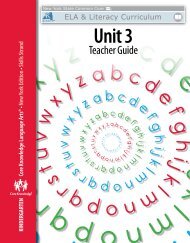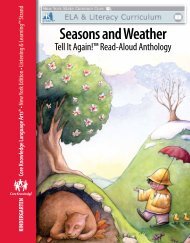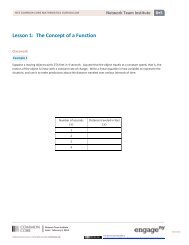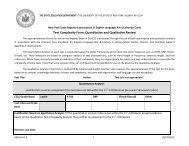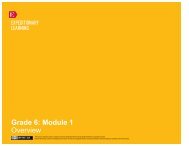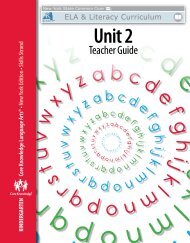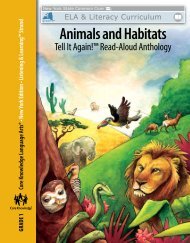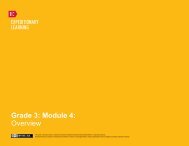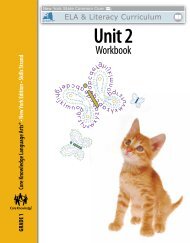Read-Aloud Anthology - EngageNY
Read-Aloud Anthology - EngageNY
Read-Aloud Anthology - EngageNY
Create successful ePaper yourself
Turn your PDF publications into a flip-book with our unique Google optimized e-Paper software.
Show image 2A-9: Variety of insect antennae<br />
8 What are the body parts humans<br />
use to sense things, or to learn<br />
more about our surroundings?<br />
(eyes, ears, nose, mouth, skin)<br />
So, now you’ve seen insect eyes and mouths. What else do<br />
you see on the head of these insects? Ah, yes, those long feelers!<br />
Those are the insects’ antennae, their most important sense<br />
organs. Insect antennae come in a variety of shapes and sizes and<br />
help insects learn more about their surroundings. 8<br />
Show image 2A-10: Cricket antennae<br />
9 What is the middle section of an<br />
insect’s body called?<br />
These jointed feelers, such as those on this cricket, are often<br />
covered with tiny bristles and pegs, and some are even quite<br />
feathery. Antennae are primarily used for smell and touch, although<br />
some can pick up sounds or detect movements in the air. Do you<br />
see a nose on this cricket? No, at least nothing that looks like your<br />
nose. Instead of a nose, the cricket uses its antennae to smell.<br />
Eyes. Mouth. Antennae. What else might you expect to find<br />
on an insect’s head? What other sensory organs do you have on<br />
the side of your head? Right—ears! Do you see any ears on this<br />
cricket? No. The cricket’s ears are located on its legs, attached to<br />
the middle section of the cricket’s body. 9<br />
The middle section of an insect’s body is called the thorax. The<br />
thorax has three pairs of jointed legs and usually, but not always,<br />
two pairs of wings. Notice I said pairs. A pair is two of a specific<br />
item. If there are three pairs of legs, how many legs does an insect<br />
have altogether? Yes, all insects have six legs.<br />
Let’s take a look at the cricket’s thorax and see if we can spot<br />
its ears.<br />
Show image 2A-11: Cricket’s thorax and front legs<br />
10 Here the word patch means a piece<br />
of skin covering an opening. The<br />
word patch can also mean a small<br />
area of land where a particular<br />
plant grows, like a pumpkin patch.<br />
Look just below its knee joint on the front leg. Do you see<br />
a smooth patch of skin? 10 That is the cricket’s eardrum which<br />
is very important for it as it communicates with other crickets<br />
through sound. The cricket’s eardrum bends in and out to catch<br />
the sound waves so it can communicate with other crickets.<br />
Insects 2A | What Makes an Insect an Insect? 29<br />
© 2013 Core Knowledge Foundation


